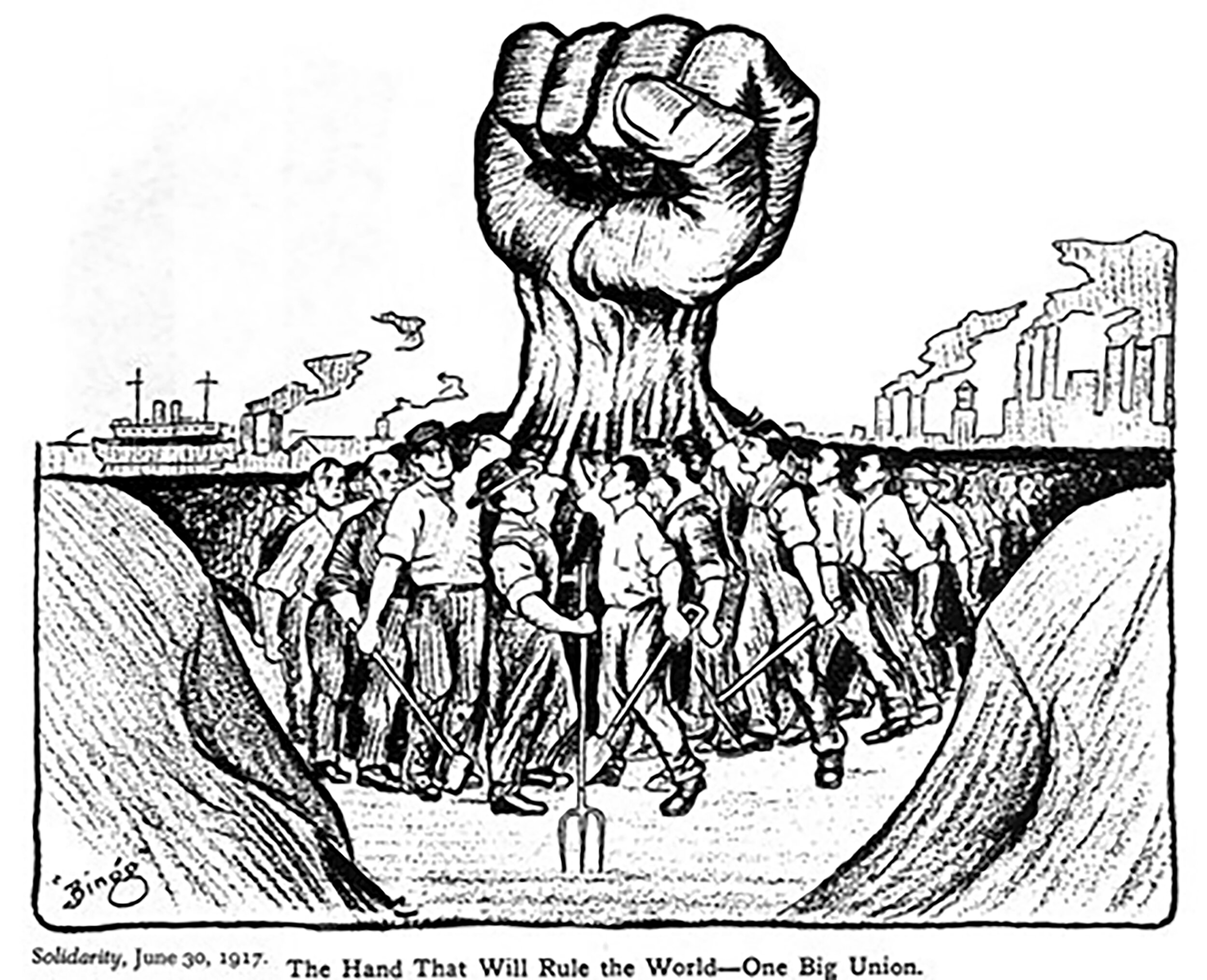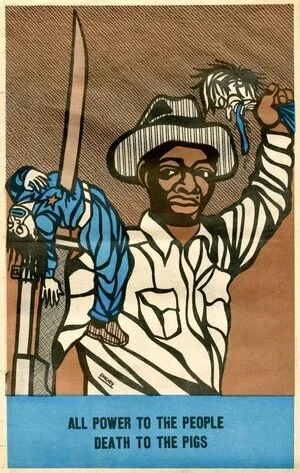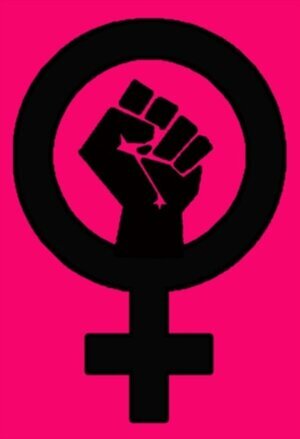I’ve always been fascinated by body language, hand gestures, and all of the ways we communicate without words. I’ve explored this in almost all of my work, but especially when making the series In Seven Days...
After my time with President Obama came to an end, it took me over three years to produce the final imagery. I began by internalising all of my research; my sketches and photographs, as well as all the newspapers, magazines, and other paraphernalia I had collected along the way. I wanted to draw out the most important themes, stories, events, and characters from everything I had witnessed. Hand gestures were a hugely important part of this, and a way of visually communicating a complex message, in a seemingly simple way.
I think perhaps the hand gesture that conveys the most powerful message and embodies the longest and most interesting history is the raised fist. I used it in the second print in the In Seven Days… series: Day 2, Struggle, pictured below, alongside a series of developmental pieces.
Reach, Study III 2010 unframed
Reach, Study IV 2010 unframed
It is President Obama's hand, but you won’t see him doing this symbol often. I was lucky to sketch the rare gesture as a witness to the “Change We Need” rally in Concord New Hampshire.
For me, this portrait is about the long-arc of history and the idea that meaningful change can take generations. It represents everyone who came before Obama - Martin Luther King and the Civil rights movement, the 1968 Olympics, and Nelson Mandela leaving Victor Verster Prison.
Recently, I was interviewed by the incredible Lou Mensah for the Shade Podcast Our poignant and important conversation about the raised fist and its rich and diverse history inspired me to share some of my research on its symbolism as an iconic image of solidarity, resistance, and power.
You can listen to the podcast below or visit: https://podfollow.com/shade/view
If you are interested in Day 2 Struggle, or one of the unique works I created using the iconic raised fist imagery, please visit my online viewing room.
These works and many others, including two brand new pieces I created in response to the 2020 Presidential election are currently displayed at Zuleika Gallery, part of the exhibition Nicola Green: Unity .
The History of The Raised Fist
The raised fist is famously associated with the black power movement; but it has a long history as a global symbol of solidarity and the fight against oppression, it’s been used by socialists, republicans, anti-fascists, feminists, and really any oppressed group or revolutionary social cause around the world. So many of these fights are intertwined, and the fist is a symbol that we are bound with others in a common struggle. All unified by the raised fist as a symbol of strength, hope, and “we shall overcome”.
1848 ‘The Uprising’ by Honoré Daumier was inspired by the French Revolution of 1848 and is one of the earliest examples of a political clenched fist. Daumier is said to have been deeply affected by the passion of the French revolutionaries and wanted to portray their fighting spirit.
The Uprising (1848) Honoré Daumier © Courtesy of the The Phillips Collection, Washington, D.C
1917 The clenched fist was used on posters created by the Industrial Workers of the World, an international labour union, and has been associated with workers movements ever since. Published in 1917, this illustration is another early example of its use.
Cartoon published in the Industrial Workers of the World (IWW) journal Solidarity on June 30, 1917
1917 The October Revolution marked the inception of the first communist government in Russia, and thus the first large-scale socialist state in world history. The ideology of communism became influential on a global scale throughout the 20th century. Communist parties would start to form in other countries and the images below show the use of the raised fist in communist propaganda around the world.
The 1920s & 30s The Roter Frontkämpferbund (Alliance of Red Front-Fighters) was a German far-left paramilitary communist organization founded during the Weimar Republic. They used the clenched fist as their symbol on all insignia.
Opposition to the Nazis’ and the spread of fascism across Europe led to a broad alliance of communists, socialists, and liberal democrats known as the Popular Front. The Popular Front adopted the raised fist in their fight against fascism.
In 1936, anti-fascists resisted when the British Union of Fascists attempted to march through Jewish neighbourhoods in London. Thousands of people came together with fists in the air and turned the fascists back.
Anti-fascists at the 1936 “Battle of Cable Street” in the East End of London
1936 - 1939 During the Spanish Civil War the Popular Front Salute was used by the Republicans. The clenched fist stood in stark contrast to the open-palmed Roman salute used by the Nationalist forces
The violent conflict sparked the creation of posters by both the Nationalists and the Republicans. Propaganda posters survive as incredible documents of the era.
1937 Popular Front Republican propaganda poster from the Spanish Civil War
1937 Popular Front Republican propaganda poster from the Spanish Civil War
1937 The fist was popularised by Taller de Gráfica Popular, a print shop in Mexico City that used art to advance revolutionary social causes.
1960s The artist and activist Frank Cieciorka produced a simplified version of the fist for the Student Non-violent Coordinating Committee.
The raised fist emerged as a graphic symbol of resistance and unity used frequently in protests.
1948 Taller de Grafica Popular
1969 Artist Unknown. Poster made by students at Northwestern University, combining fist designed by Frank Cieciorka in 1965 with the Black Panther Party slogan.
1960s The Black Panther Party also the clenched fist salute which was repeatedly used as a symbol of black liberation. The Black Panther Party helped mainstream the clenched fist in American culture, especially among radical black nationalists and civil rights activists as the “Black Power salute.”
In 1968 the fist really became associated with the black power movement during the Summer Olympics in Mexico City, medal winners John Carlos and Tommie Smith gave the raised fist salute during the American national anthem. Tommie Smith stated in his autobiography that he saw it as a “human rights salute”, as a form of protest against ongoing racism and injustice in the United States and throughout the world.
Emory Douglas was the Artist of the Black Panther Party. He created the overall design of the Black Panther, the Party’s weekly newspaper, and oversaw its layout and production until the Black Panthers disbanded in 1979–80. Douglas made countless artworks that were reproduced in the paper and distributed as prints and posters. All of them utilized a graphic style and a vocabulary of images such as the raised fist that would become synonymous with the Black Panthers.
1968 The raised fist was frequently used in propaganda posters produced during the May 1968 revolt in France, a period of civil unrest and protests against capitalism, consumerism, and American imperialism. La Lutte continue (the struggle continues) is a silkscreen print depicting a factory chimney topped with a clenched fist, produced by the Atelier Populaire (Popular Workshop) a student-run printing studio.
La Lutte continue (1968) © Bibliothèque nationale de France
In 1969 after the Miss America Beauty Pageant, the fist was adopted by the Feminist movement, using the image of a raised fist inside the female gender symbol. It was also used by the Gay Liberation Front, for example during the Stonewall Riots - a series of spontaneous demonstrations by members of the gay community in response to a police raid that began in the early morning hours of June 28, 1969, at the Stonewall Inn in the Greenwich Village.
In 1990 Nelson Mandela used the clenched fist salute upon his release from Victor Verster Prison.
Although it never stopped being a symbol of Black pride, the clenched fist has made a major comeback with Black Lives Matter.
Black Lives Matter was founded in 2013 and the raised fist has become a symbol for the movement. BLM’s mission is to “eradicate white supremacy and build local power to intervene in violence inflicted on Black communities by the state and vigilantes. By combating and countering acts of violence, creating space for Black imagination and innovation, and centering Black joy, we are winning immediate improvements in our lives.”
The raised fist embodies a message of solidarity and the intersectionality of different struggles all around the world. I think this will continue to be an enduring global symbol of power and change, and inspire strength and hope for generations to come.
What do you think about the role of art in global struggles, progress, and change? Let me know in the comments!
2020 Black Lives Matter protest
Sources:
http://www.jstor.org/stable/3527066
https://www.jstor.org/stable/27672022?seq=1
https://graduateway.com/blog/screen-politics-pop-art-and-the-atelier-populaire/
https://www.aljazeera.com/economy/2019/5/1/may-1-labour-day-what-is-international-workers-day
https://library.ucsd.edu/speccoll/visfront/intro.html
https://collections.lacma.org/node/580931
https://www.nytimes.com/2008/11/28/arts/design/28cieciorka.html
https://news.artnet.com/art-world/emory-douglas-interview-1889924





























